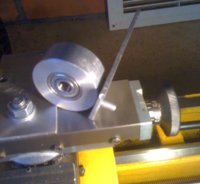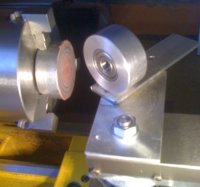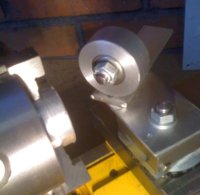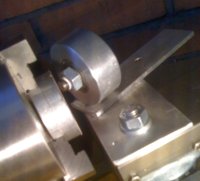Very cool, TwoManyXS1Bs
.
Here is a little valvetrain project I'm working on myself for the SR/TT500 (they have similar valvetrains to the XS650).
I'm interested in observing how the lift curve changes from the lobe to the valve. I currently have two examples of aftermarket camshafts and a stock one being measured. I hope to get more down the road. The valvetrain has been accurately measured and mapped it out in CAD.
I'm also interested to see if the camshaft companies are using lobes designed for this valvetrain's geometry in mind, or if they're using lobes from another application "it's close enough". This will manifest itself in some weird things going on with the lift curves (and subsequently, velocity, acceleration, etc.).
Here is
Camshaft 'A':
Measured lobe lift vs. Measured valve lift vs. Calculated valve lift (lobe lift * rocker ratio)-lash
This would be the velocity and acceleleration curves. Notice how they change from the lobe to the valve.
And here is looking at the error between the measured valve lift curve and calculating it by (lobe lift * rocker ratio)-lash:
Statistically, they correlate well, but you can see where the variation occurs.
ρ: correlation coefficient (-1 to +1)
MSE: Mean square error. You use this to look for bias. The closer to zero, the better.
RMSE: root-mean square error. Basically looking at deviation between an observed value and an estimator
Look at it this way:
The red line has a slope of 1:1. This would be the measured valve lift curve.
The black dots would be the lift point at each degree for the (lobe lift * rr) - lash. Since it sees each lift twice, it's either going to plot a value above, on the slope, or below. So either it's calculated to have a higher lift than the measured (above the line) or lower lift than measured (below the line). At around .200 valve lift they're essentially equal, but at lower lifts they're not and at higher lifts it trends down.
IMO, I think graphing it this way really demonstrates well the variation in the rocker arm geometry as it moves through its arc.
 ....or supervise me while I do another one.
....or supervise me while I do another one. ....or supervise me while I do another one.
....or supervise me while I do another one.




